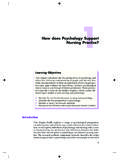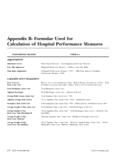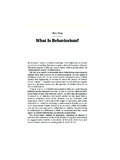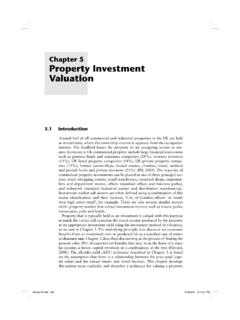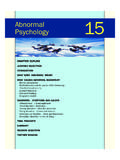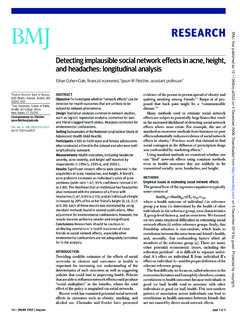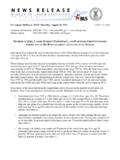Transcription of PART I Developmental Designs - Wiley-Blackwell
1 longitudinal and Cross-Sectional Designs1 part IDevelopmental DesignsHORC0111/8/04, 9:14 AM12 Schmidt, TetiHORC0111/8/04, 9:14 AM2 longitudinal and Cross-Sectional Designs3 CHAPTER ONEI ssues in the Use of longitudinal andCross-Sectional DesignsKelly Robinson Todd Schmidt and Douglas M. TetiBaltes, Reese, and Nesselroade (1977) defined the task of Developmental science as the description, explanation, and modification (optimization) of intraindividual change inbehavior and interindividual differences in such change across the life span (p. 84, italicsin original).
2 This task was embraced by many over the last 100 years, and indeed thediscipline has yielded a wealth of knowledge about the physical, cognitive, emotional,and social development of individuals across the life research has traditionally been conducted using one of two methodo-logies. One involves the repeated measurement of a sample of individuals, usually at thesame age at the start of the study, over a period of time, termed a longitudinal study. The task in longitudinal studies is to find meaningful associations between age changes andchanges in specific outcome behaviors or abilities of interest.
3 The second involves themeasurement of several samples of differing ages simultaneously, termed a cross-sectionalstudy, in which the task is to discover age group differences in particular behaviors chapter reviews these two approaches from the vantage point of the generaldevelopmental model, discusses the advantages and pitfalls of each, and highlights exem-plars of each from the Developmental Developmental Function and the GeneralDevelopmental ModelWohlwill (1970a) defines a variable as Developmental when it changes with age in agenerally uniform and consistent way across individuals and environments.
4 He assertsHORC0111/8/04, 9:14 AM34 Schmidt, Tetithat our interest should not be in looking for significant age-related differences but indiscovering the nature of the age function its shape and form. The developmentalfunction is defined as the form or mode of the relationship between the chronologicalage of the individual and the changes observed to occur in his responses on somespecified dimension of behavior over the course of his development to maturity (Wohlwill,1973, p. 32). Wohlwill (1973) asserted that extending the concept of the developmentalfunction to the whole life span was not useful because of the challenge of studying thelife span longitudinally, the lack of measurable change in some aspects of behaviorat maturity, and the difficulties in ascertaining the onset of aging.
5 There are many life-span Developmental researchers, however, who take issue with this premise and haveconducted interesting, valuable research on mature individuals ( , Schaie, 1996;Schaie & Caskie, this volume; Siegler & Botwinick, 1979).The parameters that make up the Developmental function were explicated in a semi-nal paper by Schaie (1965), who is widely credited with laying out the paradigm ofdevelopmental research that has shaped research for over three decades and continues todo so. The three parameters that define Developmental change according to Schaie s(1965) general Developmental model are age, cohort, and time of measurement (also calledperiod).
6 Age is commonly defined as chronological age; this definition is not withoutsome controversy, as will be discussed later. Cohort is defined as a group of individualsexperiencing an event or set of events associated particularly with that cohort (a cohort-defining event) (Mayer & Huinink, 1990). The most frequently used cohort-definingevent is the birth of an individual. Time of measurement is most typically definedaccording to calendar time, although this definition too has been questioned by some( , Schaie, 1986).According to the model, different Developmental research Designs can be seen ascombinations of the three variables.
7 Simple longitudinal and cross-sectional Designs aredefined by the ages of interest to the researcher, the cohort(s) from which the sample isdrawn, and the time or times of measurement. More complex Developmental Designs areproposed under the model, but these are discussed by Schaie and Caskie in Chapter used in cross-sectional research, the age variable really taps interindividual differ-ences. When used in longitudinal research, it taps intraindividual change (Schaie, 1983,1984, 1986). The cohort variable is an individual differences variable, while time ofmeasurement or period is an intraindividual change three variables by definition are not independent; that is, once two of thesethree parameters are determined, the third is automatically defined (Baltes, 1968; Schaie,1965, 1986).
8 This means that age the variable most often of interest to developmentalresearchers is always inevitably confounded with either cohort or time of (1986) pointed out that this is because we tend to define each variable in terms ofcalendar time, and proposed Designs for unlinking calendar time from the variables inorder to get at the independent effects of them ( , defining cohort more broadly thantime of birth) (see Chapter 2, this volume). These Designs , such as cross-sequential andcohort-sequential Designs , appear infrequently in the Developmental s general Developmental model has been subjected to much criticism over theyears ( , Baltes, 1968; Baltes, Reese, & Nesselroade, 1977).
9 Strict adherence to itrequires the researcher to make some perhaps untenable assumptions, such as assumingHORC0111/8/04, 9:14 AM4 longitudinal and Cross-Sectional Designs5that one variable in the model has no effect on the dependent variable (Schaie, 1986).Another limitation of the model is that it assumes that change occurs incrementally overtime with age in a linear fashion (Kosloski, 1986). This in fact may not be true for manydevelopmental functions such as personality traits. Finally, some have argued that themodel is really only useful for describing change, not for explaining it (Baltes, Reese, &Nesselroade, 1977).
10 In spite of these criticisms, the general Developmental model has spurred much thoughtabout how development should be studied. Because age, cohort, and time of measure-ment serve as proxies for other causal variables (Hartmann & George, 1999), the modelhas forced researchers to think more creatively and complexly about developmentalprocesses. The goal for many Developmental researchers is to understand the contribu-tion of age to the Developmental function, but it should be clear that researchers need toinvestigate the contributions of age, cohort, and time of measurement to the develop-mental function because they are inextricably Cross-Sectional DesignsThe simple cross-sectional study consists of at least two samples of different ages drawnfrom different cohorts and measured simultaneously.




